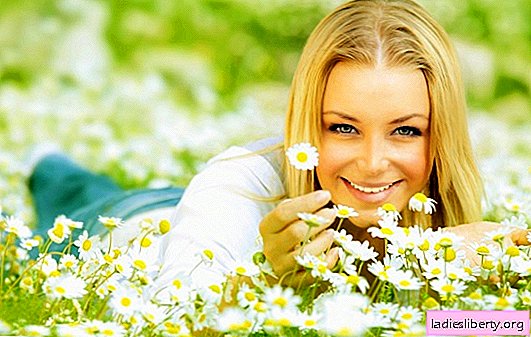
There are a lot of varieties of gloxinia, all of them are pleasing with abundant flowering from the beginning of summer until the very fall. But due to simple oversights in the care, the plant dries, stretches, does not bloom, or even disappears. It is easy to solve these problems. The main thing is to create suitable conditions for the flower and give it a little attention..
Mistakes in growing gloxinia: how to create a suitable climate at home
Gloxinia belongs to the Gesneriaceae family. Like all representatives, she prefers an abundance of light. Moreover, at different stages of development, lighting is not the same.

In early spring, when the shoots are just beginning to grow, it is better to remove the pot on the south window. In summer, during the flowering of gloxinia, the plant is carried out on the eastern or western windowsill. For normal development, a flower is enough 12 - 14 hours of light per day.
It is not unimportant for gloxinia to maintain temperature. If the tuber is only planted, then the temperature is maintained at + 23 ... 25 ° C. When the sprouts appeared, it was lowered to + 20 ° C. During the flowering period, the temperature in the room should not fall below + 18 ° C, otherwise gloxinia will slow growth, drop buds or disappear altogether.
In addition to lighting and temperature, the flower needs high humidity. Optimum 60 - 80%.
IMPORTANT! The leaves of gloxinia do not tolerate spraying, so you need to increase air humidity in other ways.
Why gloxinia does not bloom at home: growing and caring for a flower
If gloxinia refuses to bloom, then there may be several reasons:
- insufficient lighting;
- lack of top dressing;
- too big pot;
- low temperature in the room.
The lighting and temperature conditions for gloxinia have already been discussed, so let's talk more about fertilizing. For normal flowering, the plant is regularly fed with organic and mineral fertilizers.
At the beginning of growth, organic matter is introduced, after two weeks they switch to complex mineral mixtures for flowering plants. You can use fertilizers for violets. After flowering, the number of top dressings is gradually reduced, the tuber is prepared for hibernation.

Gloxinia does not bloom for a long time if the tuber is planted in a spacious pot. The smaller the capacity, the larger the bells. Between the tuber and the sides of the pot should remain no more than 2 cm.
IMPORTANT! The old gloxinia tuber does not bloom regularly; it is better to renew the plant.
Gloxinia leaves dry: how to grow a flower with bright leaves at home
Lack of humidity and too bright lighting in the summer leads to dry tips of the leaves.
If the flower stands in direct sunlight, then it must be shaded, otherwise it will not work to avoid burns. Over time, the leaf changes color to pale green, after which it completely dies.
If the lower leaves dry and die, the gloxinia may have a period of acclimatization. The plant is difficult to tolerate moving and new growing conditions. Try to create suitable conditions and in two weeks the flower will get used to it.
Gloxinia leaves are often stained and dry from overflow. The plant is watered as necessary, its roots are thin, so it can quickly rot.
IMPORTANT! Between watering the soil should dry.
In summer, watering is increased, but the condition of the flower is monitored. Moisturize the soil only with warm water.

When all conditions are met, and care for the flower is not broken, then the leaves can dry from a spider mite. Infection could occur in a store or from other plants in the house. The flower is rapidly dropping leaves, it will not work out quickly. First, all affected parts are torn off, after which the tuber and soil are treated with a soap solution. After a week, the treatment is repeated. If it does not help, then use chemicals.
Why gloxinia shoots are pulled and how to fix it
Gloxinia shoots are very long after wintering for several reasons:
- the room is too hot, optimally + 20 ° C;
- not enough light;
- an excess of nitrogen fertilizer in the soil.
Elongated shoots can be cut and rooted, the tuber will give new sprouts that will have time to bloom this season.
IMPORTANT! If you leave everything as it is, then there will be no full bloom, the sprouts will fall.
What to do with gloxinia after flowering: why the tuber disappears and how to keep it until spring
In late autumn, the plant stops developing and goes into a dormant state. At this time, watering is reduced, and then completely stopped. The entire aerial part of gloxinia is cut off. Gloxinia care is changing:
- the pot is cleaned in a cold room, where the temperature is at the level of + 8 ... 10 ° С;
- the soil is occasionally moistened to prevent the tuber from drying out.
In this state, the flower is left until new sprouts appear, after which they return to normal mode.
You can store tubers without soil, they are pulled out and wrapped in paper. Storage temperature + 5 ... 8 ° С.
IMPORTANT! Abundant watering during the rest period leads to rotting of the tuber and the appearance of mold.
Often, gardeners complain that the tubers cannot tolerate winter and disappear, although all conditions have been met. This happens for some reason:
- the tuber is too young;
- the presence of pests in the soil;
- infection or other diseases.
Young tubers of the first year of life are not sent to hibernation, they simply will not wake up in the spring. Gloxinia go to rest from the second year of cultivation.
In addition, only fully healthy tubers are sent for wintering. To do this, they are etched with phytosporin or other drugs. The soil is well disinfected.

If the tuber has not sprouted in the spring, then dig it and cut it. The slice should be pink or yellow. In this case, the plant can still be saved.
Dry the cut site, treat with brilliant green, fungicides or any antiseptic, and then plant in a loose substrate.
To stimulate root formation, you can water it with a Kornevin solution.
May your gloxinia delight you all year round!











